HMS Alliance, based at the Royal Submarine Museum in Gosport,
from Blogger https://ift.tt/I9sLBSE
via IFTTT March 12, 2024 at 01:56PM See all posts in full – click here https://jcsnavyandmilitarynews.blogspot.com/
from Blogger https://ift.tt/I9sLBSE
via IFTTT March 12, 2024 at 01:56PM See all posts in full – click here https://jcsnavyandmilitarynews.blogspot.com/
from Blogger https://ift.tt/K43nhyH
via IFTTT March 12, 2024 at 01:51PM See all posts in full – click here https://jcsnavyandmilitarynews.blogspot.com/
It is seen here getting ready to load fully-equipped Marines during a loading test of the troop-carrying capacity of the aircraft. The only Navy flying boat ever equipped with turboprop engines, the R3Y could also beach itself, and offload troops and cargo on a beachhead. Needless to say, the idea did not take off.
Fly Navy,
Dave
www.logbookmag.com
Photo: U.S. Navy via the National Museum of Naval Aviation.
https://ift.tt/eAD8QW2
from Blogger https://ift.tt/Xd971v5
via IFTTT March 12, 2024 at 01:32PM See all posts in full – click here https://jcsnavyandmilitarynews.blogspot.com/
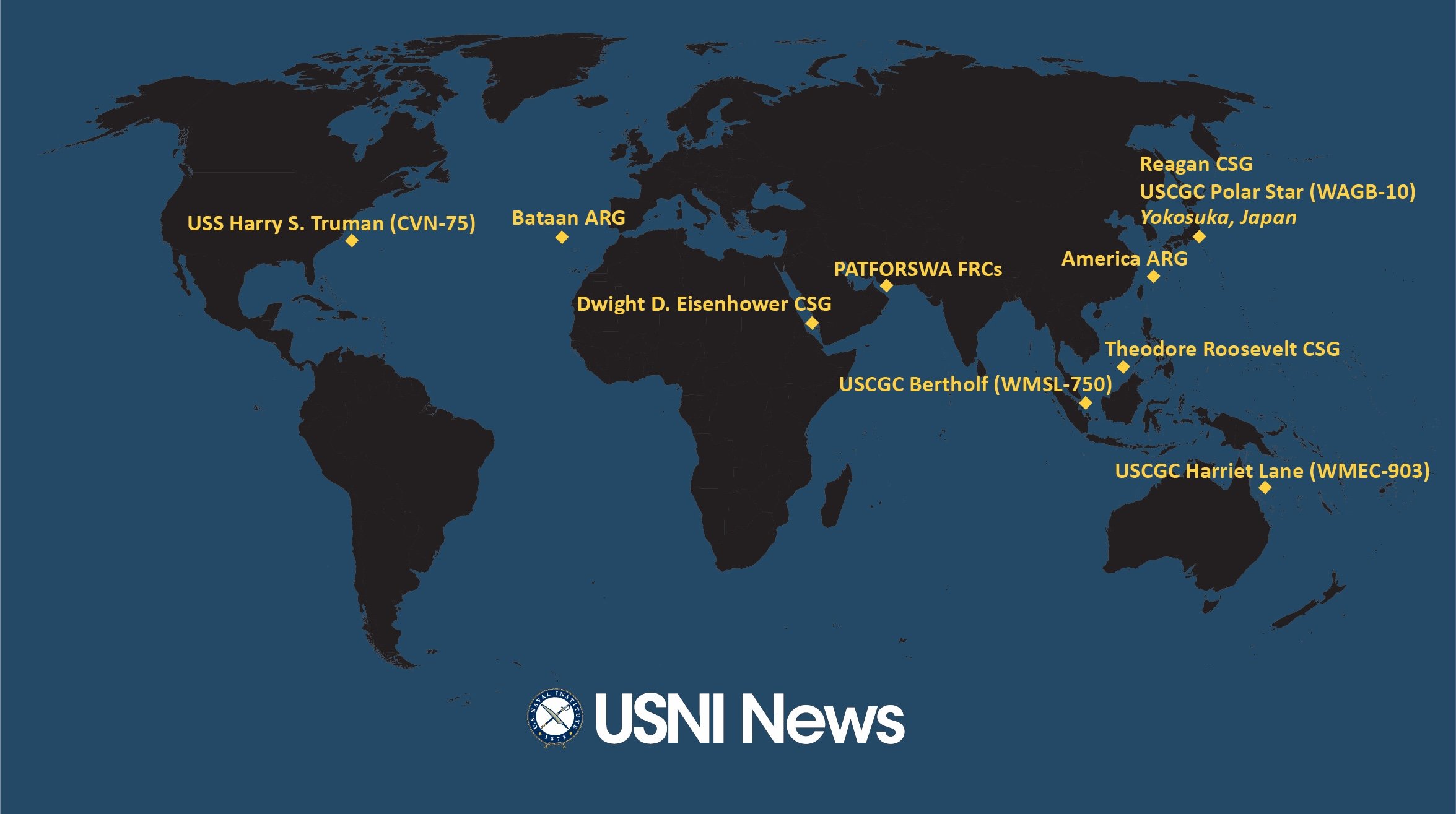
These are the approximate positions of the U.S. Navy’s deployed carrier strike groups and amphibious ready groups throughout the world as of March 11, 2024, based on Navy and public data. In cases where a CSG or ARG is conducting disaggregated operations, the chart reflects the location of the capital ship.
| Total Battle Force | Deployed | Underway |
| 293 (USS 233, USNS 60) |
97 (USS 65, USNS 32) |
61 (45 Deployed, 16 Local) |

USS Ronald Reagan (CVN-76) is in port in Yokosuka. The carrier is set to depart for the East Coast later this year. USS George Washington (CVN-73) will replace Reagan in Japan.
The big deck amphibious warship USS America (LHA-6) departed Sasebo, Japan, on Thursday.
USCGC Polar Star (WAGB-10) arrived in Yokosuka on Monday for a regularly scheduled port visit.
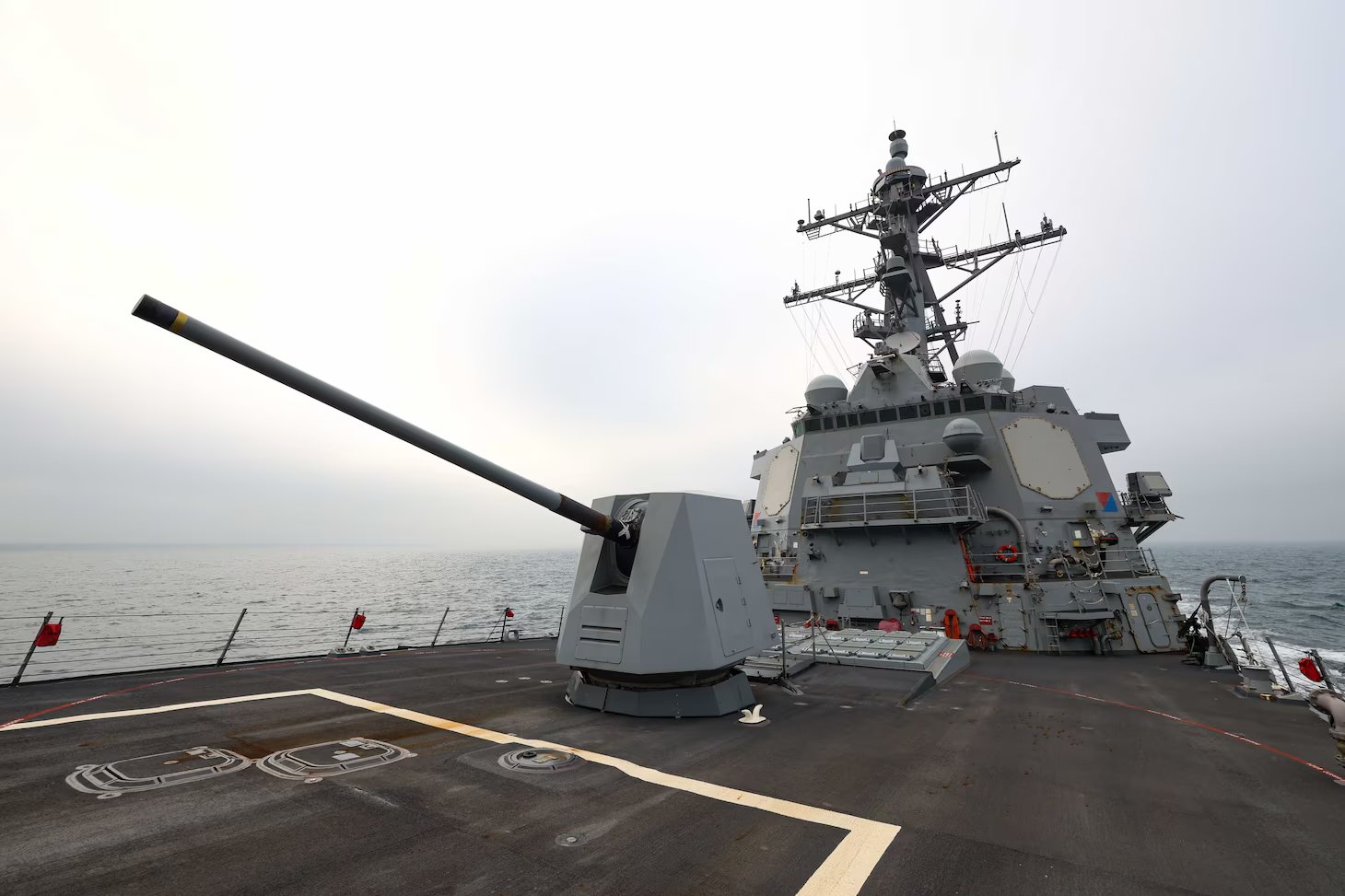
USS John Finn (DDG-113) made the second U.S. transit of the Taiwan Strait for 2024.
“U.S. ships transit between the South China Sea and the East China Sea via the Taiwan Strait and have done so for many years. The transit occurred through a corridor in the Taiwan Strait that is beyond any coastal state’s territorial seas,” reads a statement from U.S. 7th Fleet.
The People’s Liberation Army’s Eastern Theater Command said Chinese forces monitored the transit, according to a statement on Chinese social media service Weibo.
The Japan-based destroyer made a similar transit on Jan. 24.
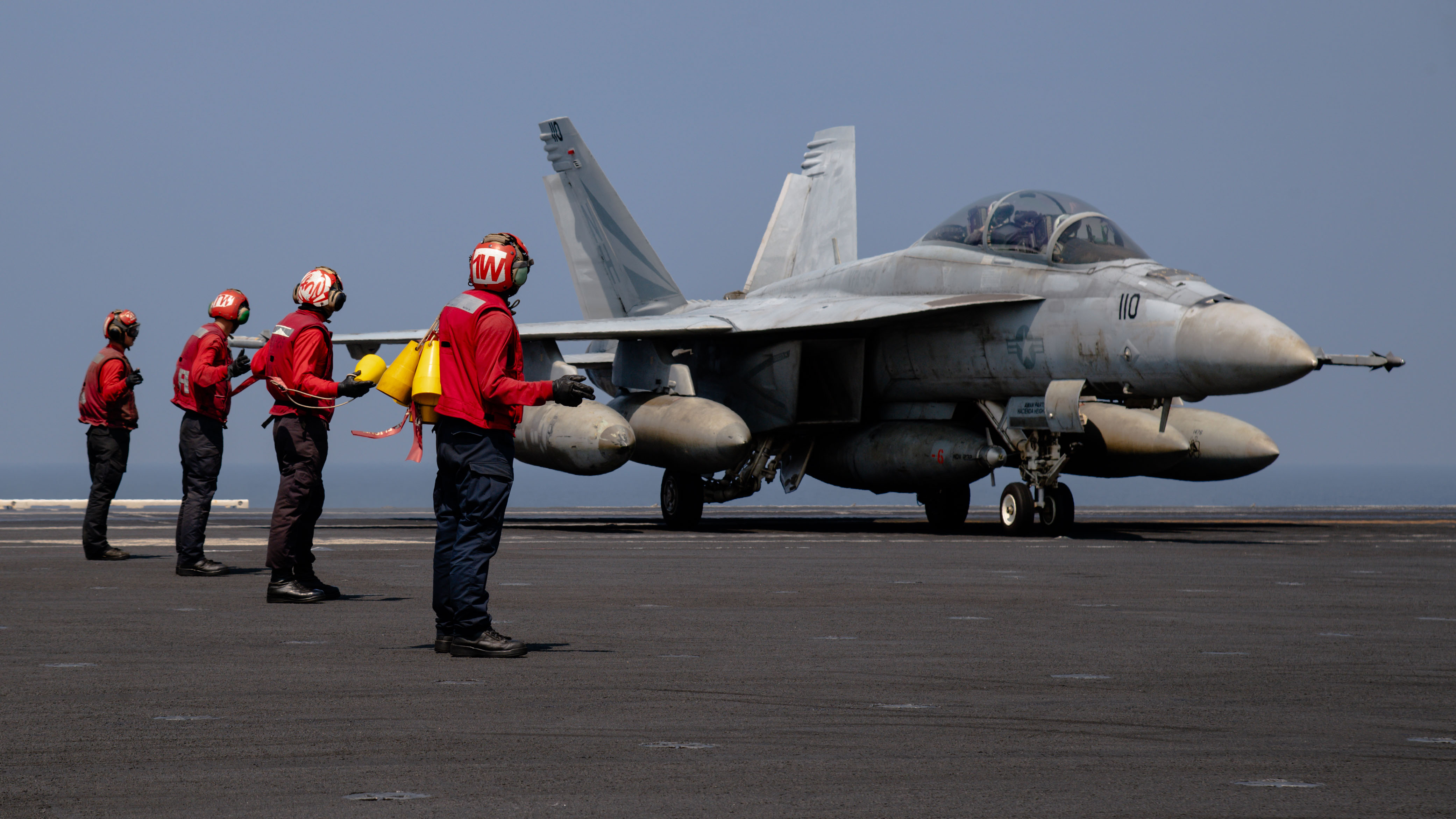
Aircraft carrier USS Theodore Roosevelt (CVN-71) is operating in the South China Sea.
The carrier has been using older C-2A Greyhounds as a temporary carrier-onboard delivery vehicle while the CMV-22B fleet was grounded following the November crash of an Air Force MV-22B Osprey off the coast of Japan. While the military has recently lifted the grounding guidance, Navy Vice Adm. Daniel Cheever, commander of Naval Air Forces, told reporters Wednesday that the Navy CMV-22s returning to flight would be a “crawl, walk, run incremental approach. There will first be enhanced maintenance checks,” Cheever said, followed by functional flight checks done by the Navy’s most experienced pilots. “Return to flight is not the same as return to mission,” Cheever said. He added it will be weeks, if not months, before CMV-22 pilots and crews will be again transporting personnel and equipment to aircraft carriers.
Carrier Strike Group 9
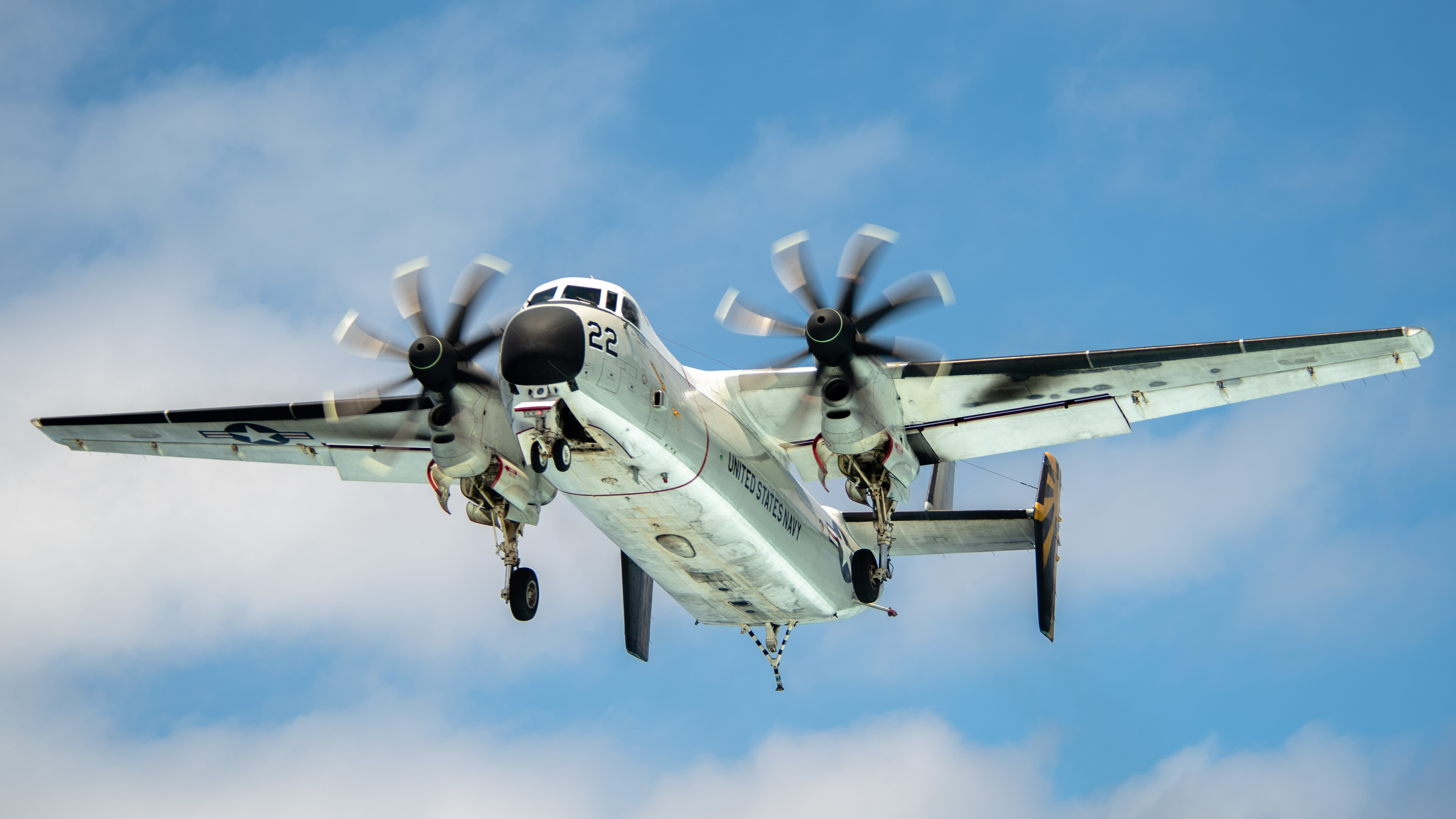
Carrier
USS Theodore Roosevelt (CVN-71), homeported at San Diego, Calif.
Carrier Air Wing 11
Cruiser
USS Lake Erie (CG-70), homeported at Naval Station San Diego, Calif.
Destroyer Squadron 23
Destroyer Squadron 23 is based in San Diego and is embarked on Theodore Roosevelt.
The National Security Cutter USCGC Bertholf (WMSL-750) is operating on the edge of the South China Sea near Singapore.
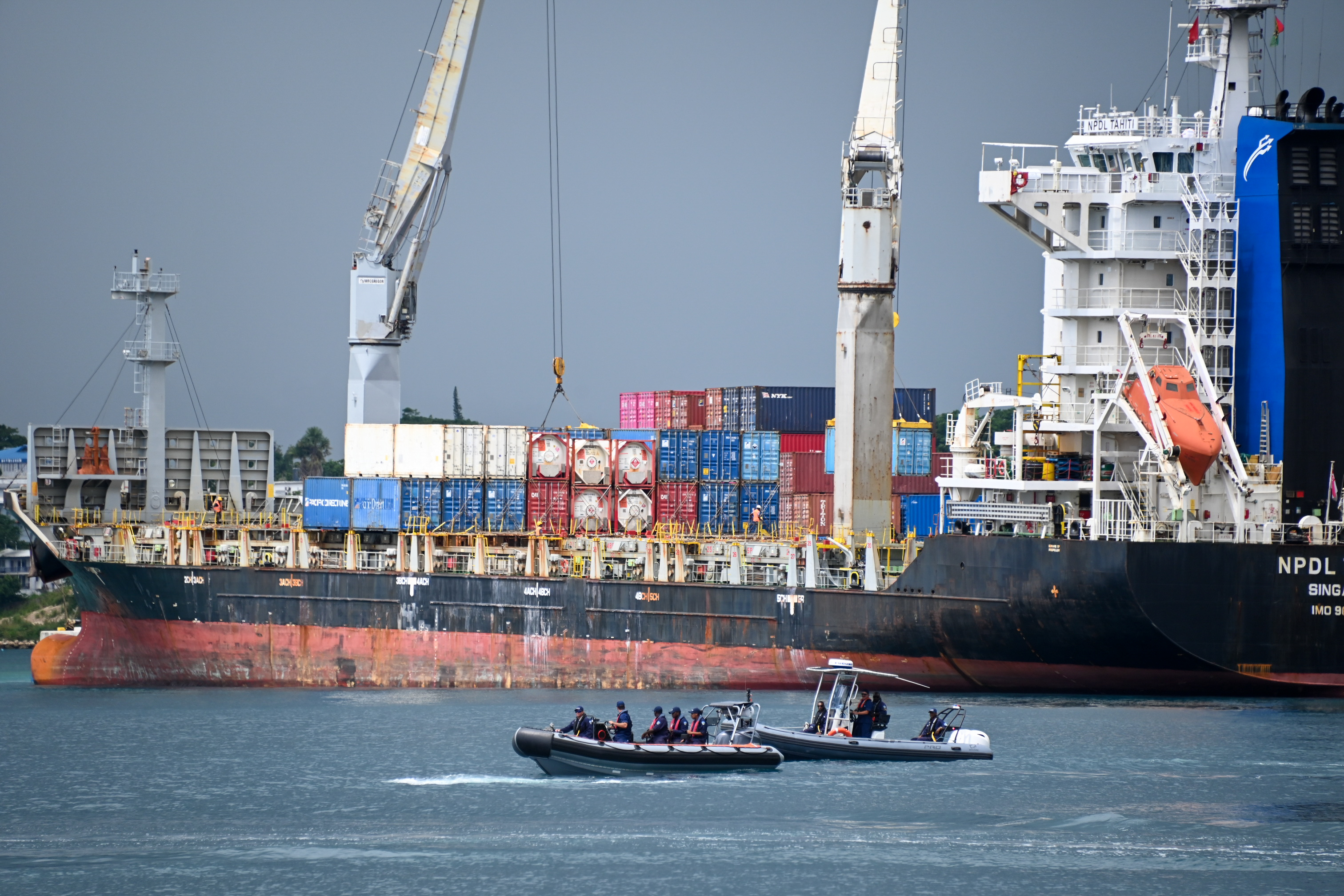
Coast Guard cutter USCGC Harriet Lane (WMEC-903) is underway on its first deployment since the cutter relocated to Hawaii. The ship last reported in Cairns, Australia, on Thursday.
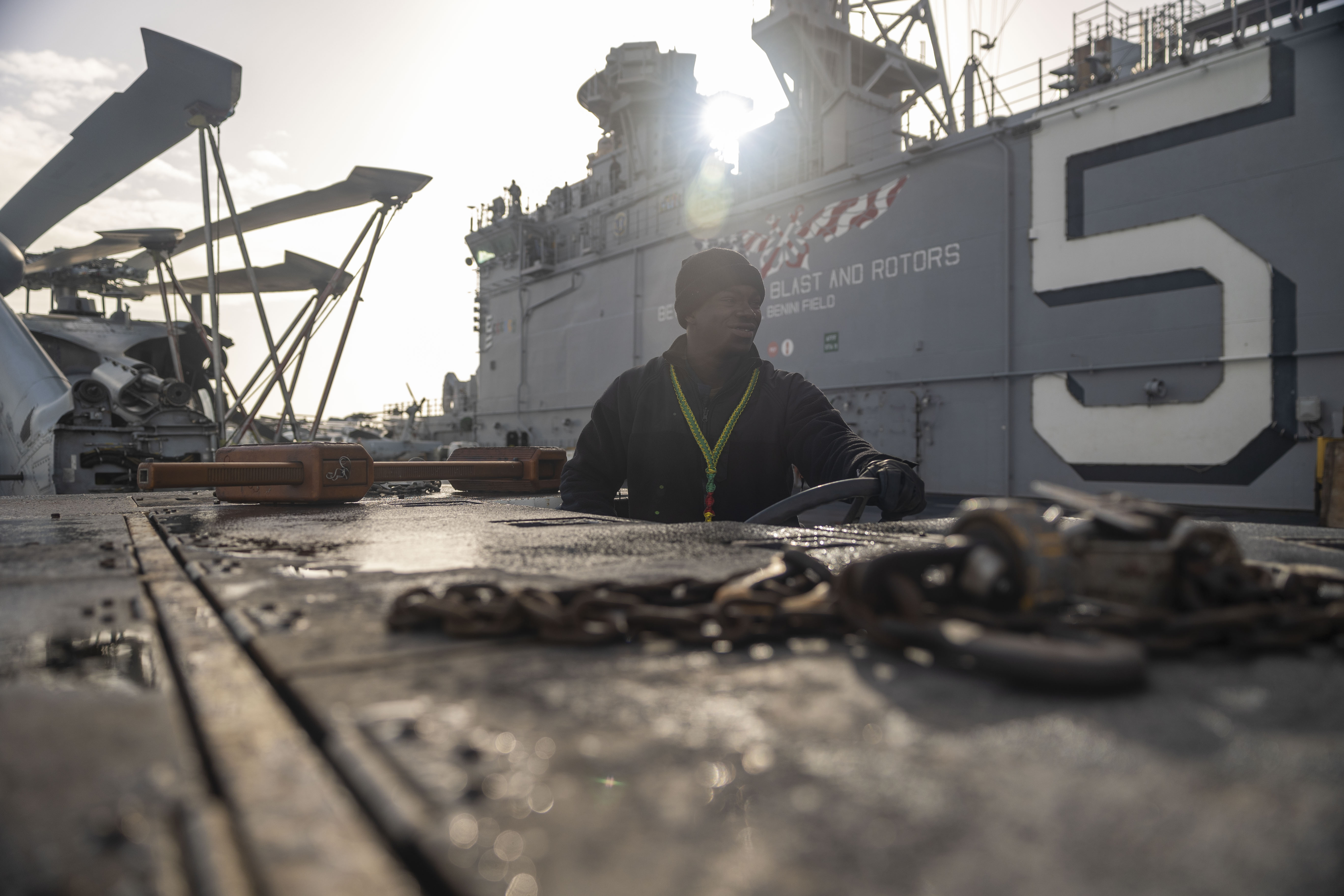
The ships of the Bataan Amphibious Ready Group (ARG), along with the embarked 26th Marine Expeditionary Unit (Special Operations Capable) (MEU(SOC)) departed the Mediterranean and transited the Strait of Gibraltar Wednesday en route return to homeport following an extended deployment to the Middle East and Eastern Mediterranean.
Embarked units include Amphibious Squadron 8, 26th MEU (SOC), Fleet Surgical Team 8, Tactical Air Control Squadron 21, Helicopter Sea Combat Squadron 26, Assault Craft Unit 2, Assault Craft Unit 4 and Beach Master Unit 2. The 26th MEU (SOC), based at Camp Lejeune, N.C., includes Battalion Landing Team 1st Battalion, 6th Marines; Marine Medium Tiltrotor Squadron 162 (Reinforced) and Combat Logistics Battalion 22.
U.S. ships are continuing to patrol the Red Sea as part of Operation Prosperity Guardian, the U.S.-led multinational effort to protect ships moving through the region. Houthi forces in Yemen continue to attack merchant shipping in the Red Sea and the Gulf of Aden, while U.S. naval forces in the region have continued self-defense strikes against Houthi weapons that U.S. Central Command (CENTCOM) says are a threat to naval and merchant ships. Houthi forces say they are targeting ships with connections to the United Kingdom, the U.S. and Israel.
As of Monday, the Eisenhower Carrier Strike Group was operating in the Red Sea.
Ike deployed on Oct. 14, while several of the carrier’s escorts left on Oct. 13. The carrier transited the Strait of Gibraltar on Oct. 28 and transited the Suez Canal on Nov. 4.
The U.N. Security Council on Jan. 10 approved a resolution calling on Yemen’s Houthi rebel group to “cease its brazen” attacks in the Red Sea.
Carrier Strike Group 2
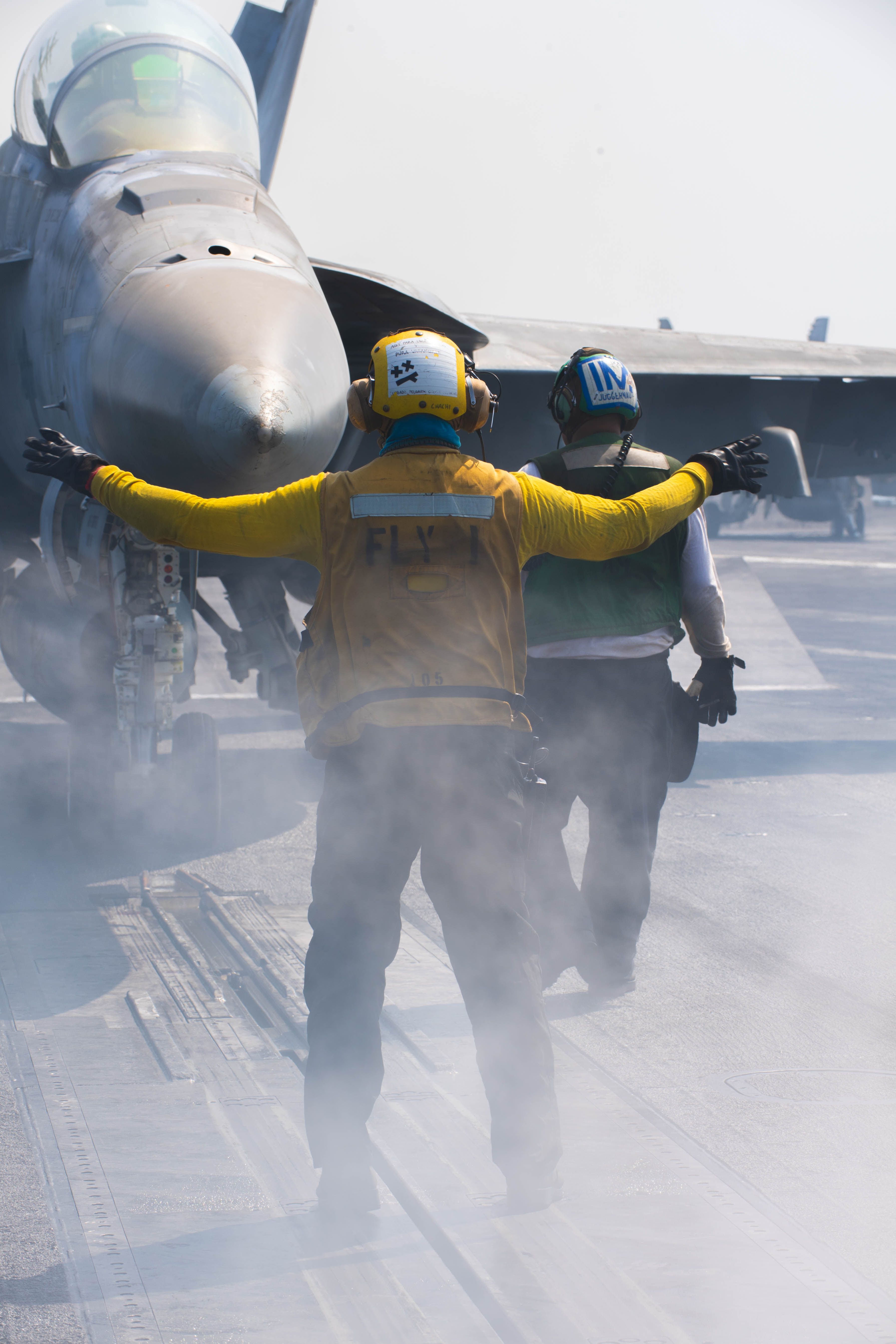
Carrier
USS Dwight D. Eisenhower (CVN-69), homeported at Norfolk, Va.
Carrier Air Wing 3
Cruiser
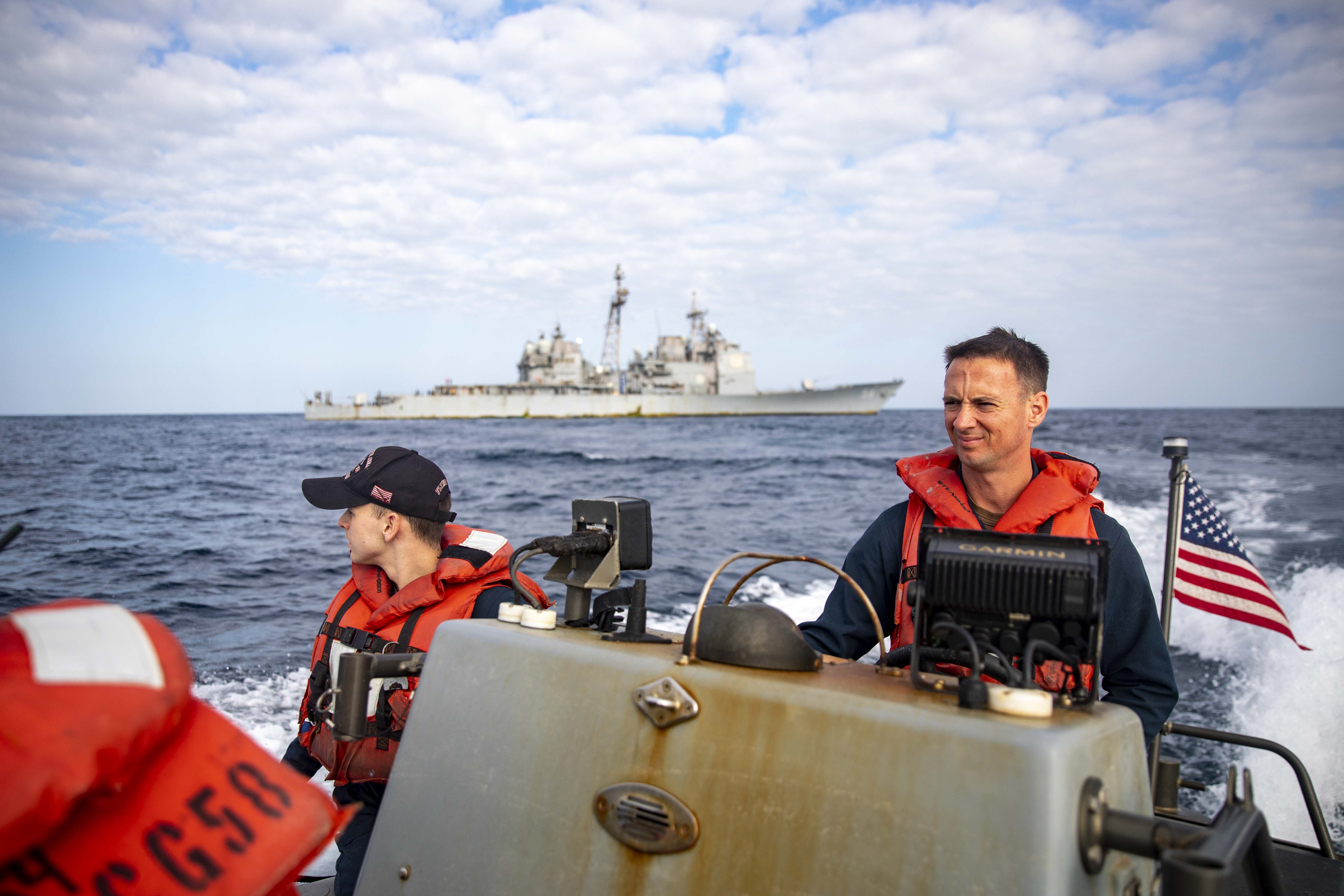
USS Philippine Sea (CG-58), homeported at Naval Station Norfolk, Va.
Destroyer Squadron 22
Destroyer Squadron 22 is based in Norfolk, Va., and is embarked on Eisenhower.
On Saturday, U.S. Navy aircraft and ships, with the aid of other coalition ships, shot down at least 28 one-way attack unmanned aerial vehicles, according to USNI News’ timeline of events in the Red Sea. No warships or commercial vessels reported damage.
Over the past week, Central Command forces, not identified in the command’s releases, conducted multiple strikes on Houthi anti-ship cruise missiles, anti-ship ballistic missiles and drones. The forces, which at times include Navy warships, shot down six drones and one anti-ship ballistic missile launched toward the Red Sea and Gulf of Aden.
In the Gulf of Aden

On Friday, Houthis fired two anti-ship ballistic missiles from Yemen into the Gulf of Aden at M/V Propel Fortune, a Singapore-flagged, owned, and operated vessel. The missiles did not impact the vessel. There were no injuries or damages reported.
On Wednesday, a Houthi-launched anti-ship ballistic missile hits M/V True Confidence, a Barbados-flagged, Liberian-owned bulk carrier. The missile causes a fire aboard the ship and leads to three fatalities, the first since the Houthis began launching missiles and drones at ships in the Red Sea and the Gulf of Aden.

On Tuesday, a U.S. Coast Guard cutter operating under the Canadian-led Combined Task Force (CTF) 150 of Combined Maritime Forces seized 770 kg of methamphetamines from a dhow in the Arabian Sea.
Sentinel-class fast response cutter USCGC Glen Harris (WPC-1144) seized the methamphetamines.
Glen Harris is forward deployed to Bahrain as part of a contingent of U.S. Coast Guard ships operating in the region.
U.S. Coast Guard Sentinel-class Fast Response Cutters (FRCs) are forward-deployed to the region under Patrol Forces Southwest Asia (PATFORSWA). PATFORSWA deploys Coast Guard personnel and ships with U.S. and regional naval forces throughout the Middle East. Initially deployed in 2003 to support Operation Iraqi Freedom, PATFORSWA is now a permanent presence based out of the Kingdom of Bahrain.

Aircraft carrier USS Harry S. Truman (CVN-75) was spotted departing Norfolk, Va., on Sunday, according to ship spotters.
In addition to these major formations, not shown are others serving in submarines, individual surface ships, aircraft squadrons, SEALs, Special Purpose Marine Air-Ground Task Forces, Seabees, EOD Mobile Units and more serving throughout the globe.
from Blogger https://ift.tt/EtuLSCW
via IFTTT March 12, 2024 at 01:05PM See all posts in full – click here https://jcsnavyandmilitarynews.blogspot.com/
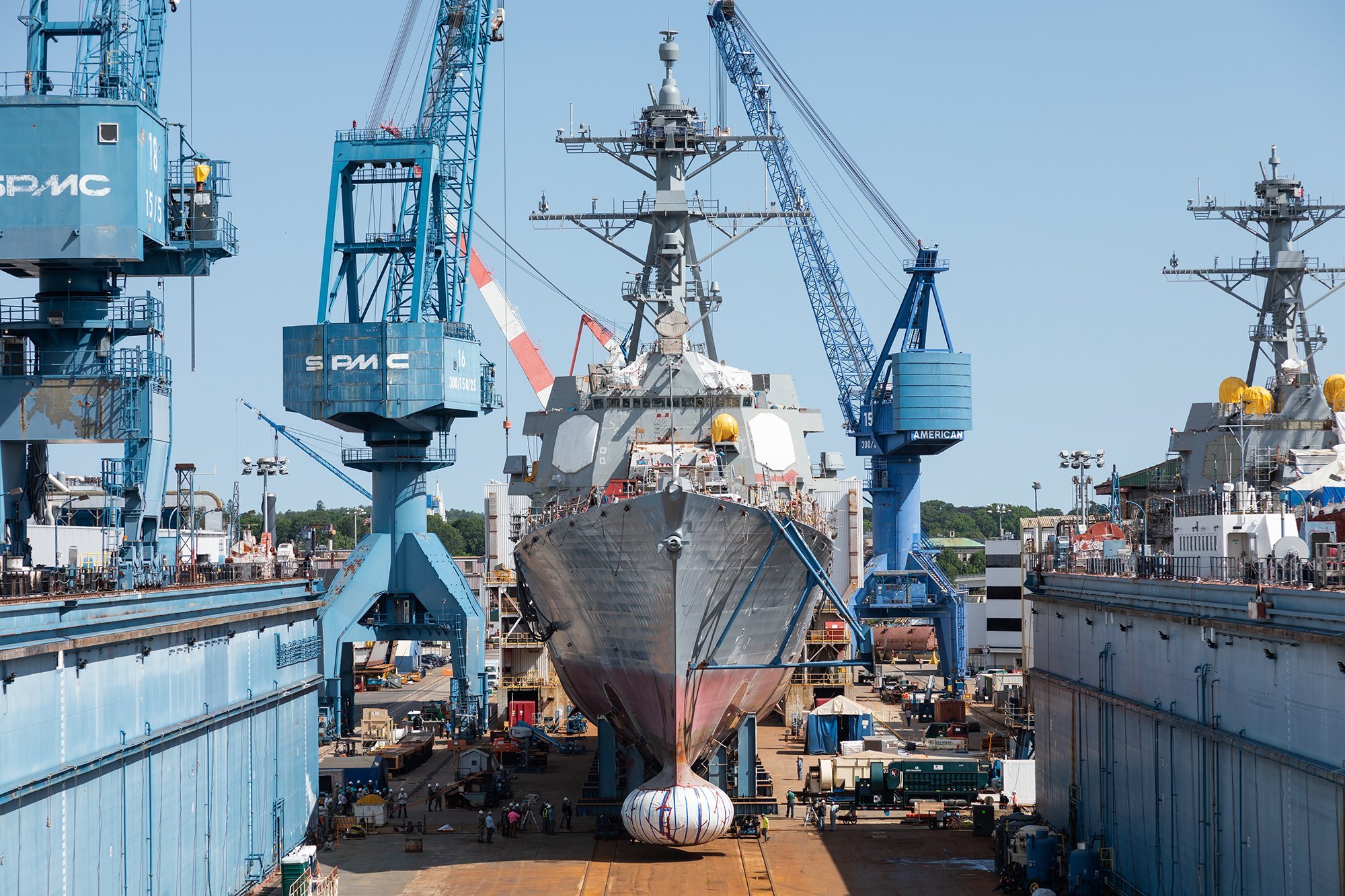
This post has been updated with additional details from the budget materials.
THE PENTAGON – The Navy wants to buy six battle force ships and decommission 19 ships in the next fiscal year, according to the service’s latest budget request.
Faced with fiscal constraints, the Navy’s Fiscal Year 2025 budget prioritizes readiness over modernization, leading to a smaller shipbuilding request and a delay for several new programs and research and development efforts.
The request, released Monday, is seeking one Virginia-class attack submarine, two Arleigh Burke-class destroyers, one Constellation-class frigate, one San Antonio-class amphibious transport dock and one Medium Landing Ship.
The Department of the Navy is asking for a total of $257.6 billion, with $203.9 billion for the Navy and $53.7 billion for the Marine Corps. The numbers are a .7 percent increase above last year’s request, according to a Navy summary. Last year’s Fiscal Year 2024 submission sought $255.8 billion for the Department of the Navy, broken out with $202.5 billion for the Navy and $53.2 billion for the Marine Corps.
The Navy’s portion of the budget breaks down to $70.2 billion in operations and maintenance funding, $63.3 billion in procurement, $43.8 billion for military personnel, $22.7 billion in research and development funding, and $3.9 billion for military construction.
This year’s request continues the Navy’s plans to divest 10 older platforms before the end of their service lives for a total of 19. The service wants to decommission two cruisers, the first four Expeditionary Fast Transports, one Whidbey Island-class docking landing ship, one Expeditionary Transfer Dock and two Littoral Combat Ships. Those ships are USS Shiloh (CG-67), USS Lake Erie (CG-70), USNS Spearhead (EPF-1), USNS Choctaw County (EPF-2), USNS Millinocket (EPF-3), USNS Fall River (EPF-4), USS Germantown (LSD-42), USNS John Glenn (ESD-2), USS Jackson (LCS-6) and USS Montgomery (LCS-8).
The Navy performed a “hull-by-hull analysis” of each ship to determine which ones to retire early, Navy Under Secretary Erik Raven told reporters Friday ahead of the budget rollout.
“On Littoral Combat Ship, very consistent with prior year’s message that we look at the requirements for LCS and we find we have hulls excess to the validated requirements,” Raven said. “So the divestments proposed in this year’s budget are very consistent with that analysis.”
Raven justified the LSD retirement by citing the Navy’s plans to keep buying LPD-17 Flight II ships, a line the Navy halted procurement for last year.
The Pentagon built this year’s budget under restrictions of the Fiscal Responsibility Act, which limits the Biden administration’s spending on national defense to $895 billion. In adhering to the FRA, Raven said the Navy prioritized readiness over modernization, meaning it delayed the development of some future programs.
“In terms of what comes at the top of the list it is readiness, it is people. It is the today issues that we have to get on top of,” Raven said. “Where our guidance directs us to take risk is in future modernization when there are tough choices to be made.”
“So if you look at F/A-XX or the other X programs, we knowingly took risk in the schedule for the development of those programs in order to prioritize those key investments, whether that’s readiness, or investing in our people, or undersea, to make sure that we make those programs whole,” Raven added, referring to the Navy’s next generation fighter program and other new programs like the next-generation submarine program, or SSN(X).
On the personnel side, The FY 2025 request includes a 4.5% pay increase for active-duty military and a 2% increase for civilians.
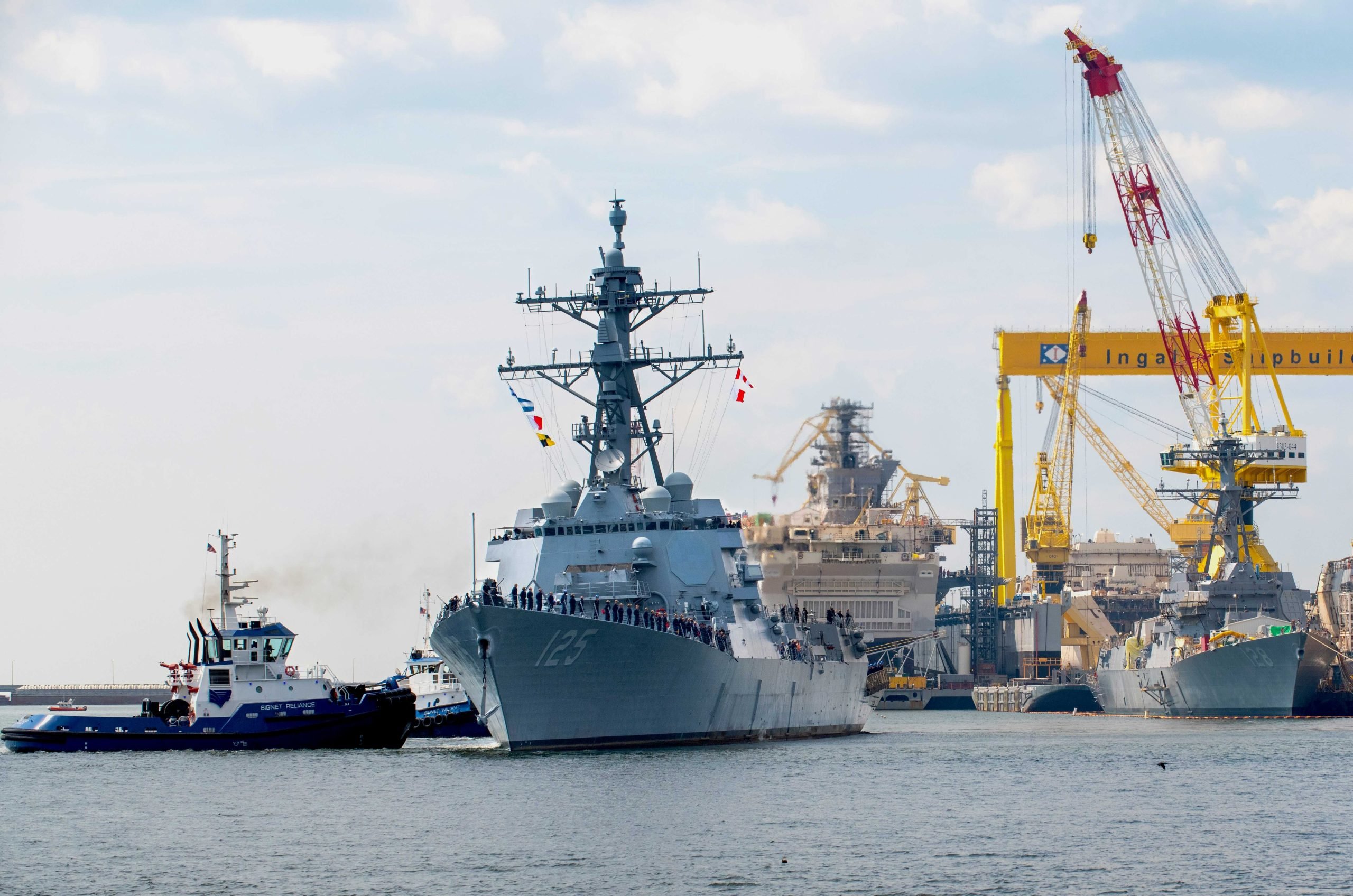
The overall request for the shipbuilding account is $32.4 billion, which is a $400 million decrease from Fiscal Year 2024’s request for $32.8 billion. The Navy notably only asks for one Virginia-class submarine in FY 2025, despite previous plans to consistently buy two attack boats each year.
Asked why the Navy cut one submarine from the request, Raven cited the fact that industry is not building the attack boats at the two-per-year rate that the Navy has been buying the Virginias. Industry is currently delivering 1.3 attack boats per year.
“We believe that the best choice for where we are in the Virginia-class program is to make substantial investments in the submarine industrial base to make sure that we get these programs on the cadence that we need,” Raven said. “And looking at where we are in procurement, we judged that funding 9 out of the 10 Virginia class that are funding in the ‘25 budget is the right move.”
A senior defense official echoed Raven’s rationale about industry when asked about the Navy’s cut.
“I think everybody felt that it’s time for a fresh approach and refresh,” that official said. “There’s a lot of money in the industrial base to try and change the dynamics so that when we do go back to ordering two subs a year, we are more closely aligned to being able to get two subs a year built.”
To that end, Raven said the Navy is making “significant investments in the submarine industrial base” across the Fiscal Year 2025 five-year budget lookout. In addition to the $2.4 across last year’s Future Years Defense Plan, Raven said request is seeking another $8.8 billion for the submarine industrial base across the FY 2025 FYDP.
This year’s request also includes a new shipbuilding program called the light replenishment oiler, which the Navy plans to begin buying in Fiscal Year 2027.
“That is a capability gap that we needed to fill,” Rear Adm. Ben Reynolds, the Navy deputy assistant secretary for budget, said of the light replenishment oiler.
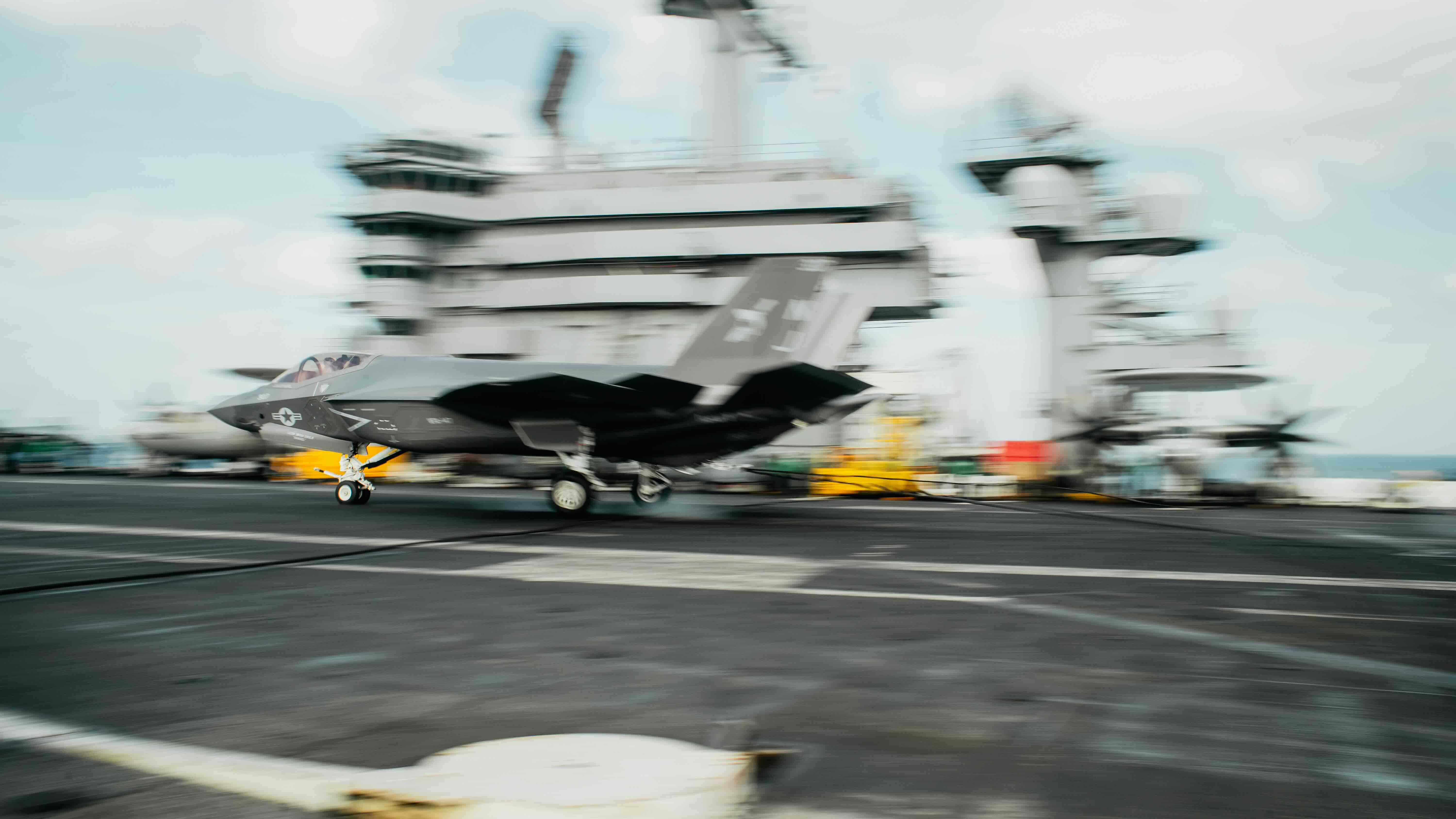
For aviation procurement, the Navy is seeking $16.2 billion to buy a total of 75 aircraft. The buy is $900 million below last year’s $17.3 billion aircraft procurement request.
The Fiscal Year 2025 procurement profile includes nine F-35C Joint Strike Fighters for the Navy, four F-35Cs for the Marine Corps, 13 F-35Bs for the Marine Corps, 15 Multi-Engine Training Systems for the Navy, 12 Multi Engine Training Systems for the Marine Corps, 19 CH-53K King Stallion heavy-lift helicopters for the Marine Corps, and three MQ-25A Stingrays for the Navy’s carrier air wing, according to a service summary.
The Navy will kick off a two-year block buy for the Marine Corps’ CH-53Ks in FY 2025, according to a Navy summary of the request. The Marine Corps’ aircraft are purchased using the Navy’s aircraft procurement account.
While the service is continuing its development of the F/A-XX next-generation fighter program, the FY 2025 request is seeking significantly fewer research and development dollars for the effort. While last year’s request sought $1.5 billion for F/A-XX, this year’s submission is asking for $454 million.
“We rephased across the FYDPs,” Reynolds told reporters Friday of the Navy’s cut in funding to the program.
The F/A-XX funding is specifically for research and development of the fighter and does not include funding spent on the Next Generation Air Dominance family of systems, some of which are classified, Reynolds said.
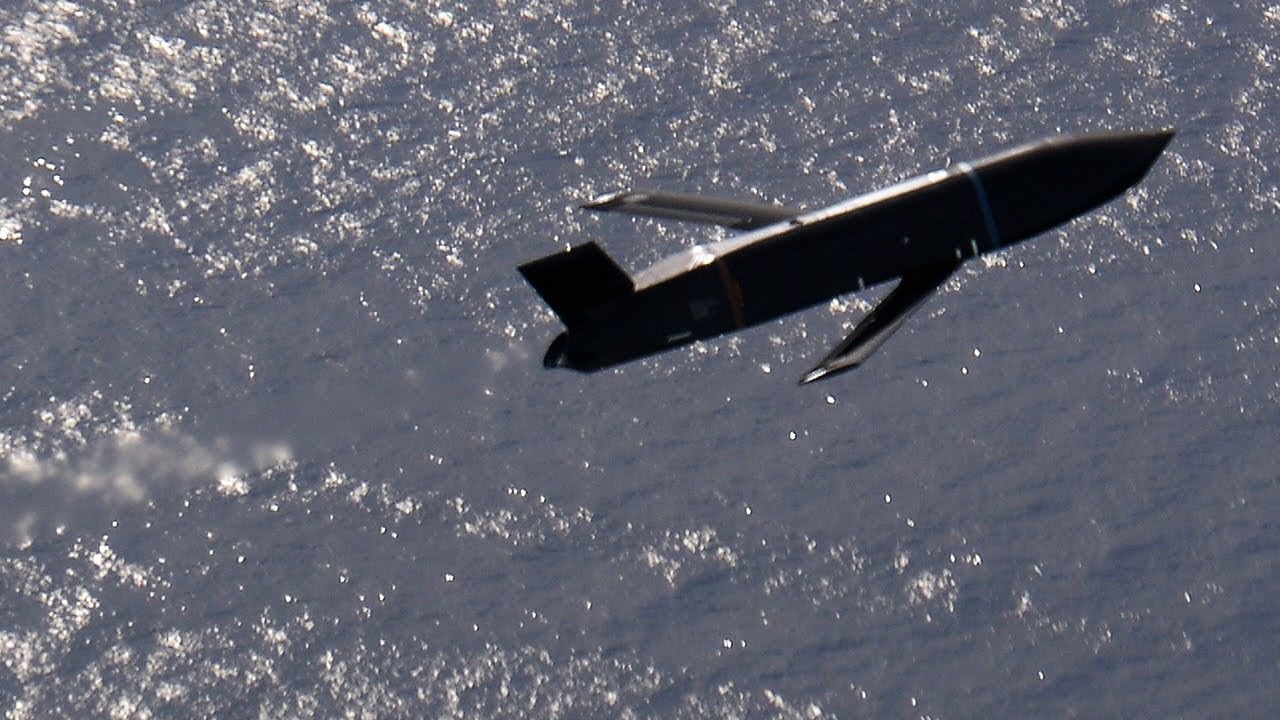
The Navy’s weapons procurement request seeks to build upon the multi-year procurement strategies for several munitions programs – the Standard Missile 6, the Long Range Anti-Ship Missile, the Naval Strike Missile, and the Advanced Medium Range Air-to-Air Missile – that the service asked to start last fiscal year. The defense spending bill for FY 2024 has yet to pass Congress, so the funding for those multi-year procurement schemes is not technically secured yet.
The Navy wants to buy 125 SM-6s, which the service has consistently asked for in the last few budget cycles. This year’s request also asks for 22 Tactical Tomahawks for the Navy and Marine Corps, 102 Naval Strike Missiles for both services, 30 LRASMs, 261 AMRAMs, and 60 LRASMs Extended Range.
The request does not ask to buy any Conventional Prompt Strike weapons. CPS is a hypersonic missile that the Navy planned to field on the Zumwalt-class guided-missile destroyer in FY 2025 and the Virginia-class attack submarine in FY 2028. But the plans to field the weapon on the Zumwalt-class destroyers are delayed until FY 2026, Reynolds told reporters.
“We’re rephasing Conventional Prompt Strike to allow our tech team and our development to catch up,” Reynolds said.
“The Department continues to pursue critical milestones on the path to fielding CPS on USS ZUMWALT in the mid-2020’s,” a Navy spokesperson told USNI News.
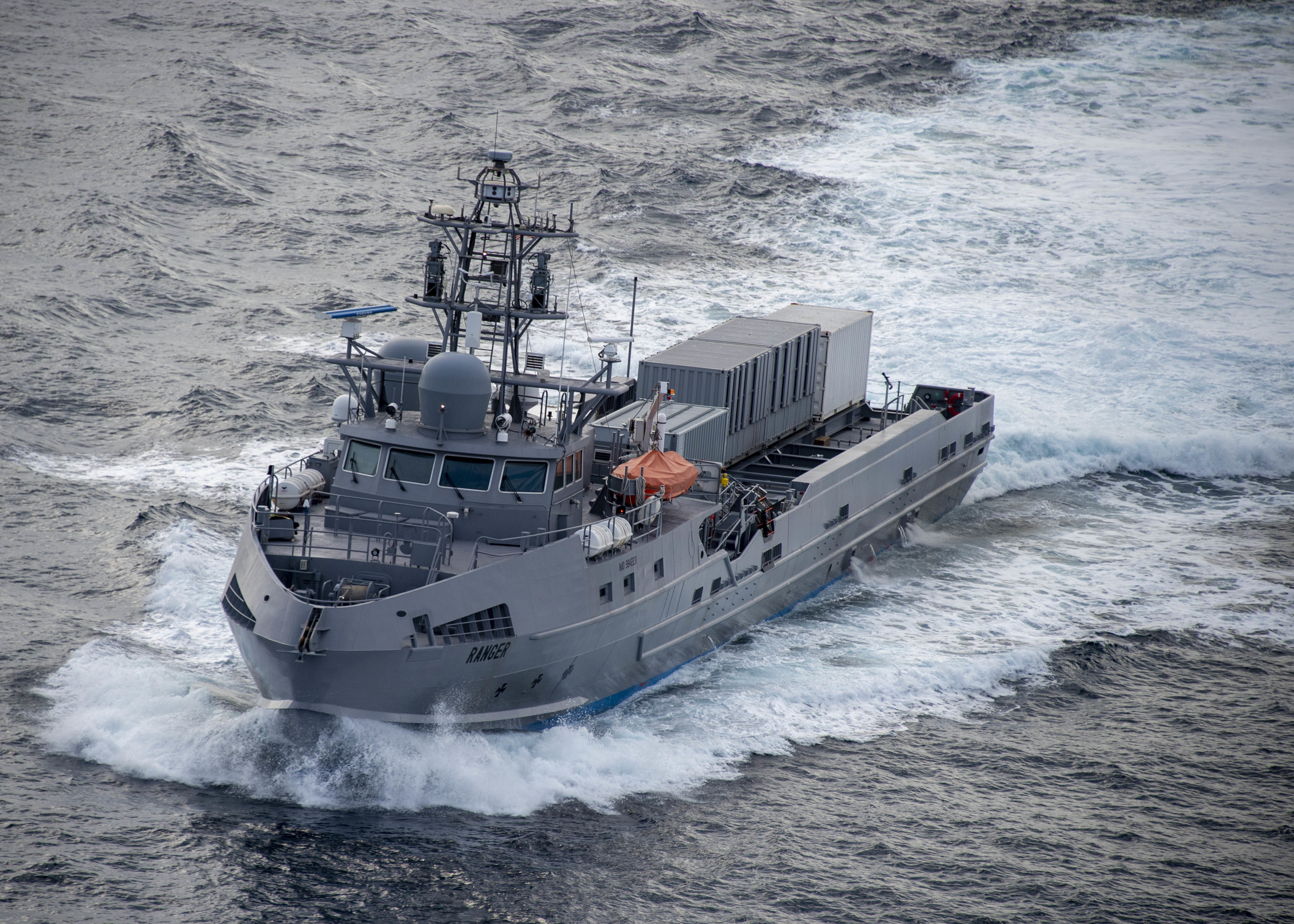
The Navy is continuing research and development efforts for its unmanned systems programs, but two of the larger platforms are delayed.
The service is asking for $54 million in research and development funding for the Large Unmanned Surface Vehicle and $21 million in R&D funding for the Extra Large Unmanned Undersea Vehicle. It’s a substantial decrease compared to the FY 2024 request, which asked for $117 million for LUSV and $104 million for XLUUV. That decrease is due to the delays for both programs, Reynolds told reporters.
“Where we have one to two unmanned systems that we’re experiencing any kind of technical difficulty, we working to move those, rephase those across the FYDP,” Reynolds said. “So LUSV, for example, we’re moving that from ‘25 to ’27.”
On the surface and sub-surface side, the smaller platforms are progressing better than the larger platforms, he noted.
“Some of those platforms are doing very well and transitioning from R&D into procurement,” Reynolds said, citing the small UUVs.

The Marine Corps request for Fiscal Year 2025 breaks down to $17.4 billion in operations and maintenance funding, $13.8 billion in procurement funding, $18.1 billion in personnel funding, $3 billion in research and development funding and $1.4 billion in military construction funding.
The service is asking for 80 Amphibious Combat Vehicles, matching the FY 2024 request. The Marine Corps wants to buy 674 Joint Light Tactical Vehicles, 123 Anti-Armor Missile Javelins, eight Long Range Fires, and 12 Medium Range Interceptor Capability launders and missiles.
The Marine Corps is not asking to buy any of its Navy/Marine Expeditionary Ship Interdiction Systems, also known as NMESIS, nor is it asking to buy any Ground/Air Task Oriented Radar (G/ATOR).
from Blogger https://ift.tt/bgNQjeU
via IFTTT March 12, 2024 at 12:56PM See all posts in full – click here https://jcsnavyandmilitarynews.blogspot.com/
The Royal Australian Navy (RAN) decommissioned the patrol boat HMAS Pirie in a ceremony at its homeport of Darwin on Friday, March 26.
Pirie, the first Armidale-class patrol boat to be decommissioned, conducted a wide variety of border protection missions and tasks to combat illegal fishing over the past 15 years. The vessel also deployed on Operation Resolute, the Australian Defence Force (ADF) operation to protect Australia’s borders and offshore maritime interests.
The navy said the decommissioning will help make way for the first of the service’s new Arafura-class offshore patrol vessels (OPVs).
from Blogger https://ift.tt/TXQxGCF
via IFTTT March 12, 2024 at 12:39PM See all posts in full – click here https://jcsnavyandmilitarynews.blogspot.com/
from Blogger https://ift.tt/Lum15Pk
via IFTTT March 12, 2024 at 12:24PM See all posts in full – click here https://jcsnavyandmilitarynews.blogspot.com/
ROCKINGHAM, Australia–USS Annapolis (SSN 760) arrived in HMAS Stirling in Perth, Western Australia Sunday.
This marks the second visit by a U.S. fast-attack submarine to HMAS Stirling since the announcement of the AUKUS [Australia, United Kingdom, United States] Optimal Pathway in March 2023. The Optimal Pathway is designed to deliver a conventionally armed, nuclear-powered attack submarine capability to the Royal Australian Navy (RAN).
“Historically, we’ve had allied SSNs visit Australian ports for many decades totaling more than 1,800 days,” said Rear Adm. Matt Buckley, Head of Nuclear Submarine Capability at the Australian Submarine Agency. “Starting with USS North Carolina (SSN 777) last August, these visits are taking on a more important meaning for the Royal Australian Navy and the Australian Submarine Agency as we build the infrastructure, knowledge, and stewardship needed to establish SRF-West in 2027.”
Increasing the number of SSN visits to Australia and the establishment of SRF-W comprise the first of three Optimal Pathway phases. As early as 2027, the United States will begin rotational presence in the Western Australia facility as a way to grow the RAN’s ability to operate and maintain a fleet of SSNs. Ultimately, there will be up to four U.S. Virginia-class submarines and one United Kingdom Astute-class submarine at HMAS Stirling.
The second phase of the Optimal Pathway begins in the early 2030s, with the United States selling Australia three Virginia-class submarines, with the potential to sell up to two more if needed. Phase Three sees the combination of a base British submarine design and advanced United States technology to deliver SSN-AUKUS, the future attack submarine for both Australia and the United Kingdom. Australia plans to deliver the first Australian-built SSN-AUKUS in the early 2040s.
“Having our submarines rotating through HMAS Stirling is critical to building Australia’s sovereign capability to safely and competently operate SSNs,” shared Rear Adm. Lincoln Reifsteck, the U.S. AUKUS Pillar One Program Manager. “Each visit will build upon the previous one and allow the RAN team to grow its capabilities. This visit will see Australians take a more active role in the execution of a voyage repair period.”
“For decades, the U.S. Navy, Royal Australian Navy, and Royal Navy have trained and operated together,” said Rear Adm. Chris Cavanaugh, Commander, Submarine Group (CSG) 7. “AUKUS is a natural extension of our already close relationship, building unprecedented capability and interoperability that will pay dividends for generations.”
“It’s an honor to be here and the team looks forward to working with the Australians and furthering our relationship,” said Cmdr. James Tuthill, Commanding Officer, USS Annapolis. “The enthusiasm and professionalism of the HMAS Stirling team is apparent, and we look forward to making this visit as productive as possible.”
Initially announced in September 2021, the AUKUS trilateral agreement is a strategic endeavor aimed at strengthening the security and defense capabilities of the three nations that also promotes stability and security in the Indo-Pacific region. Australia will acquire conventionally armed SSNs for the Royal Australian Navy under Pillar I of AUKUS via the Optimal Pathway announced by the heads of the three partner nations on March 13, 2023.
from Blogger https://ift.tt/BZR8vLd
via IFTTT March 12, 2024 at 12:17PM See all posts in full – click here https://jcsnavyandmilitarynews.blogspot.com/
The ERCA system uses a service-developed, 58-caliber gun tube mounted on the chassis of a BAE Systems-made Paladin Integrated Management howitzer. (Ana Henderson/U.S. Army)
The U.S. Army is changing its approach to acquiring a long-range artillery capability and scrapping its 58-caliber Extended Range Cannon Artillery prototyping effort, according to the service’s acquisition chief.
“We concluded the prototyping activity last fall,” Doug Bush told reporters at a March 8 briefing on the fiscal 2025 budget request. “Unfortunately, [it was] not successful enough to go straight into production.”
The new plan — following an “exhaustive” tactical fires study meant to revalidate elements of the extended-range cannon requirement led by Army Futures Command — is to evaluate existing options from industry this summer “to get a sense of the maturity of those systems.”
Of the 24 new Army systems slated to make it into the hands of soldiers by the end of 2023, only the Extended Range Cannon Artillery program missed that goal. The ERCA system uses a service-developed, 58-caliber gun tube mounted on the chassis of a BAE Systems-made Paladin Integrated Management howitzer.
The Army was building 20 prototypes of the ERCA system: two for destructive testing and the remaining 18 for a battalion.
The operational evaluation of ERCA revealed “engineering challenges,” Bush said a year ago. Observations in early testing of prototypes showed excessive wear on the gun tube after firing a relatively low number of rounds.
from Blogger https://ift.tt/sul90zP
via IFTTT March 12, 2024 at 11:26AM See all posts in full – click here https://jcsnavyandmilitarynews.blogspot.com/
Aerial starboard side view of the Royal Australian Navy aircraft carrier HMAS Melbourne (R21) and the destroyers HMAS Vendetta (D08) and HMAS Voyager (D04) underway, circa in 1959. On the carrier’s flight deck, two Gannet anti submarine aircraft are spotted forward with another to port abreast the island. Three Sea Venom fighters are spotted aft of the island.
Strategic Reserve on multiple occasions. In 1965 and 1966, the destroyer undertook deterrence patrols during the Indonesia-Malaysia Confrontation. Along with several runs escorting the troop transport HMAS Sydney to South Vietnam, from late 1969 to early 1970 Vendetta was assigned to combat operations and became the only Australian-built warship to serve in a shore bombardment role during the Vietnam War.
The ship underwent a two-year modernisation from 1971 to 1973, and in December 1974 was one of thirteen RAN warships involved in Operation Navy Help Darwin after Cyclone Tracy devastated Darwin. Several more deployments were made to the Far East, up until 1978. In October 1979, the destroyer was decommissioned, and served as a parts hulk for sister ship HMAS Vampire. Vendetta was sold for ship breaking in January 1987.
https://en.wikipedia.org/wiki/HMAS_Vendetta_(D08)#Websites
from Blogger https://ift.tt/JzuI3N5
via IFTTT March 11, 2024 at 04:22PM See all posts in full – click here https://jcsnavyandmilitarynews.blogspot.com/